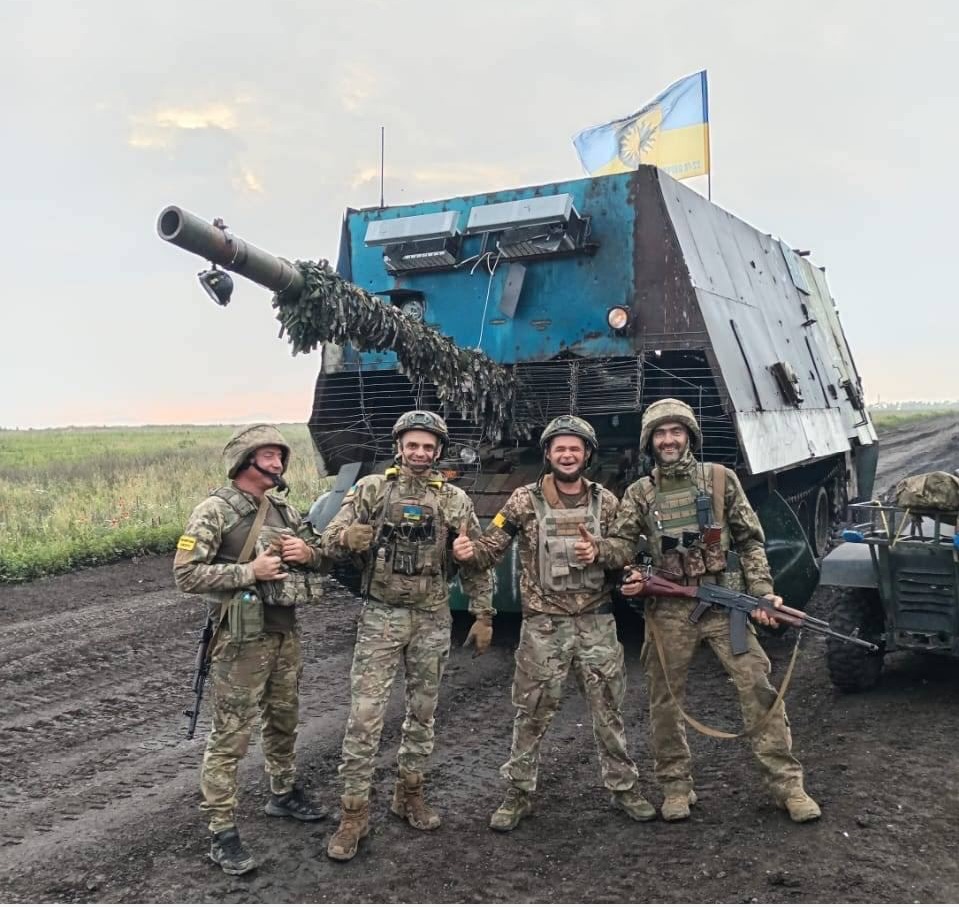In a notable development on the frontlines, Ukrainian forces have successfully captured Russia’s unconventional ‘turtle tank,’ along with its crew.
The incident, which marks the first known capture of this peculiar armored vehicle, was documented in a video initially shared on Telegram on June 17. The footage quickly went viral on social media platform X (formerly Twitter).
The video reveals that the tank, characterized by a large superstructure made of sheet metal and nets, was immobilized before being seized by Ukrainian soldiers.
Ukrainian troops can be seen climbing into the superstructure, where they encountered and captured the tank’s crew.
The footage shows two Russian crew members being apprehended. Following the capture, the Ukrainian soldiers drove the tank, now adorned with the Ukrainian flag, to their positions.
🐢🇺🇦First captured Russian turtle tank along with its crew. By the 22nd Mechanized Brigade of Ukraine. pic.twitter.com/kcILpGle1B
— Special Kherson Cat 🐈🇺🇦 (@bayraktar_1love) June 17, 2024
Information circulating online attributed the capture to the 22nd Separate Mechanized Brigade of the Armed Forces of Ukraine. Along with the video, an image has surfaced showing Ukrainian soldiers posing in front of the captured tank.
The Russian tank’s unique metal superstructure is designed to mitigate threats from enemy drones, particularly the Ukrainian FPV (first-person-view) drones. However, this adaptation significantly compromises the tank’s ability to use its main gun effectively.
While the turtle-like shell offers some protection against lighter drone attacks and shrapnel, it remains highly vulnerable to heavier weapons and anti-tank rounds, which can easily penetrate the metal shell and inflict severe damage.
Despite its limited effectiveness, the capture of the ‘turtle tank’ has sparked widespread attention and amusement among pro-Ukrainian social media users.
One user mockingly suggested that the tank, referred to as “Russian nanotechnology,” should be sent to NATO headquarters for research purposes.
The Ministry of Defense of Ukraine shared a photo of a captured tank, captioning it, “A trophy ‘turtle’ tank now in service with the UA army.”
The capture of the ‘turtle tank’ has boosted the morale of Ukrainian forces and underscored the continuous innovations and countermeasures taking place in modern warfare.

Russia’s ‘Turtle Tank’
The introduction of Russia’s ‘turtle tanks’ follows the earlier use of increasingly elaborate cage-like anti-drone armor, known as “cope cages.”
In late 2021, in an attempt to shield its tanks from attacks, Russia began welding metal cages over the turrets of its tanks. These cages, however, showed limited effectiveness, with some Western analysts mockingly referring to them as “emotional support armor.”
These makeshift defenses have become common on armored vehicles from both sides of the conflict and have even appeared outside Ukraine, potentially on submarines.
Russia has intensified these retrofits by using metal sheeting to completely enclose some tanks, earning them the nickname “turtle tanks.”
These vehicles are also equipped with electronic warfare stations to disrupt the control signals of FPV drones, and mine trawls to clear paths. The rise of these turtle tanks on the battlefield in recent months suggests attention to certain tactical challenges.

Analyst Rob Lee from the Foreign Policy Research Institute in Philadelphia commented, “I know people are laughing at this, but I don’t think it is a crazy adaptation. The Russians are adapting to the particular conditions of the battlefield in which Ukraine has a lot of FPVs but not enough ATGMs, anti-tank mines, and artillery.”
“So, sacrificing observation and the ability to rotate the turret on one tank per platoon that can jam many FPVs frequencies at once makes sense. The priority is to get infantry assault groups across open fields to buildings or defensive positions,” he added.
Evidence indicates that these turtle tanks, with their armored shells, are being deployed to spearhead assaults on well-defended Ukrainian positions, including through minefields.
The first observed example was equipped with a mine plow. However, the additional armor does not guarantee protection, as the Ukrainian military has successfully targeted these vehicles on multiple occasions.
Despite their intended protective benefits, ‘turtle tanks’ have significant drawbacks. The vertical posts can hinder the turret from rotating, and the bulkiness can limit visibility and mobility. Also, the design seems to leave a gap at the front, which a skilled FPV drone operator can exploit.
- Contact the author at ashishmichel(at)gmail.com
- Follow EurAsian Times on Google News




